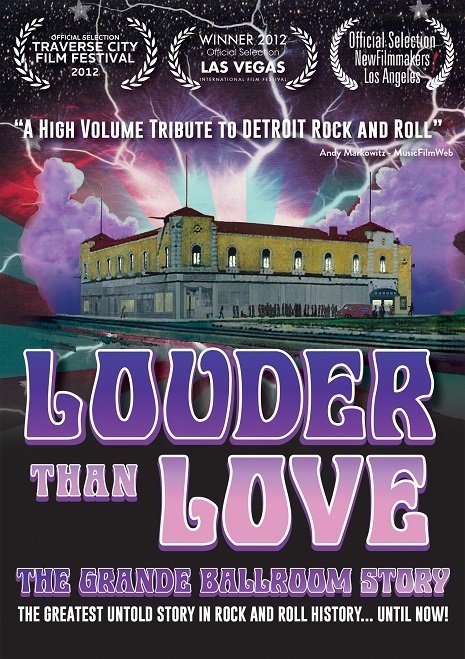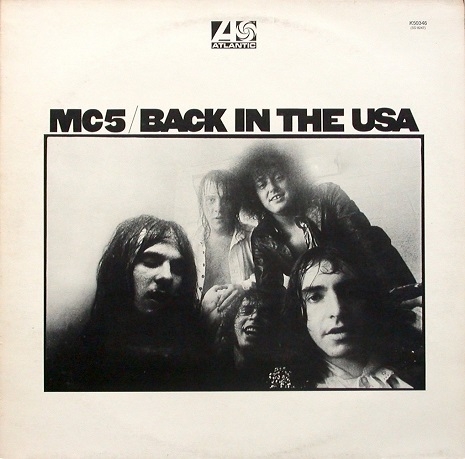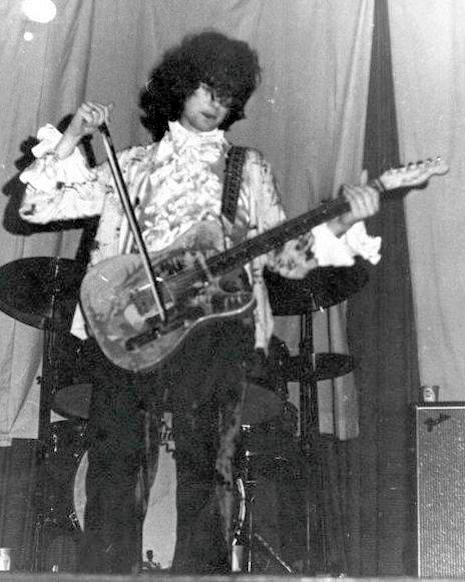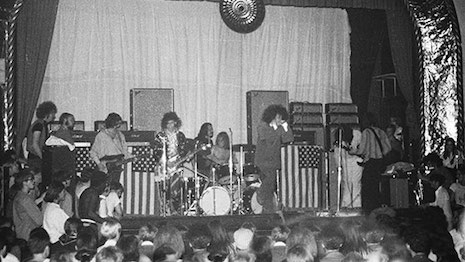
“Detroit made you good.” –Alice Cooper
Louder Than Love: The Grande Ballroom Story is a must-see film for anyone who gives a shit about the history of rock-n-roll and ‘60s counter culture. The tale of the Grande Ballroom, the legendary Detroit venue, is one that’s needed to be told for some time. Hell, just for the fact that the Stooges and MC5 made their marks there is reason enough, but the ballroom was also a popular stop on the touring circuit, with some of the biggest acts of the period gracing its stage. Through archival footage and photographs, plus new interviews with those who were there (many of whom have since passed on), first time producer/director and Detroit native Tony D’Annunzio lays out how it all went down, making us wish we could’ve been there to see it. As a Detroiter, I was often beaming with pride as I watched the documentary, despite the fact that I was only a couple of years old when the Grande closed its doors.
The Grande Ballroom is a building that drew artists of all sorts into its vortex, and is still revered by those who set foot in it. It’s a venue where bands had to give their absolute best in order to impress Detroit audiences. It’s a place that—like Alice says—made you good.
-465_465_310_int.jpg)
Outside the Grande on opening night, October 7th, 1966 (photo: Emile Bacilla)
Designed in the Moorish/Art Deco style and located on Detroit’s west side, the Grande Ballroom opened in 1928. The venue hosted big bands and was a mecca for dancing couples for decades (it could hold as many as 1,500 boppers), but by the early ‘60s, times had changed significantly and the Grande closed its doors. Fast forward to 1966: Detroit area DJ and school teacher Russ Gibb was attending a Byrds concert in San Francisco at Bill Graham’s Fillmore West, an updated dance hall. Inspired by the sounds and sights (he was especially blown away by the psychedelic light show) of the city’s burgeoning counter-culture scene, Gibb was determined to bring what he experienced to Detroit. After investigating several locations, he settled on the shuttered Grande Ballroom. Much like it had been during its initial heyday, the Grande would once again become the place to be.
-465_465_705_int.jpg)
Poster art: Gary Grimshaw
Local band MC5 performed as part of the opening festivities at the Grande Ballroom, which took place on October 7th and 8th, 1966. Russ Gibb had his friend Gary Grimshaw design the poster, and Grimshaw would continue to create advertisements for Grande events. His artwork is now synonymous with the psychedelic ‘60s. Leni Sinclair, wife of MC5 manager, John Sinclair, was part of the crew responsible for the light shows, but she is best known for the photographs she took at the Grande, as well as her films of the the Stooges and MC5. Many of the images she captured are now iconic.

Cover of the second MC5 album, ‘Back in the USA’ (1970). Photo snapped by Leni Sinclair backstage at the Grande.
Other area rock acts that honed their chops at the Grande include the Amboy Dukes, the Spike Drivers, SRC, and the Rationals. Bands that made appearances at the Grande while on tour include the Velvet Underground, Pink Floyd, the Mothers of Invention, Sly and the Family Stone, Howlin’ Wolf, the Yardbirds, Led Zeppelin, and the Who. Tom Wright, who managed the Who at the time and would later oversee the Grande, said that he “had never seen the Who try harder” than during their 1968 show at the ballroom.

The Who (photo: Tom Weschler)

Jimmy Page, The Yardbirds
-465_465_326_int.jpg)
Iggy Stooge/Iggy Pop, The Stooges (photo: Leni Sinclair)
-465_465_665_int.jpg)
Wayne Kramer, MC5 (photo: Charlie Auringer)
Unlike the “peace and love” hippie outfits that made up the bulk of the San Francisco scene, the Detroit bands were raw and gritty. One such act was more associated with the Grande Ballroom than any other, and that was the all-powerful MC5. Known for their explosive performances, the band became a staple of the venue. The 5 were keenly aware they would have to work hard to earn the love of the blue collar Detroit audiences, and incorporated the Detroit work ethic of the city’s auto workers into their act. Every group that shared the stage with the 5 learned they too had to bring it, which subsequently made them up their game—or risk leaving the place hanging their collective head in shame. In addition to being on the bill for the ballroom’s 1966 opening, other notable happenings in MC5 history took place inside the building: It’s where they recorded their debut album, the seminal live LP, Kick Out The Jams (1969), and where they played their final show the night the Grande closed for good, New Year’s Eve, 1972.

MC5
Louder Than Love: The Grande Ballroom Story has had a successful worldwide run on the festival circuit since the documentary premiered in 2012, and received a low-key video release last year. Producer/director Tony D’Annunzio has inked a deal with distributor MVD Entertainment Group, which will soon give the film the wide release it has always deserved.
After the jump, Dangerous Minds asks Tony D’Annunzio some questions about his film…






